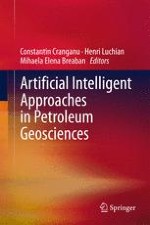2015 | OriginalPaper | Buchkapitel
Well Log Analysis by Global Optimization-based Interval Inversion Method
verfasst von : Mihály Dobróka, Norbert Péter Szabó
Erschienen in: Artificial Intelligent Approaches in Petroleum Geosciences
Aktivieren Sie unsere intelligente Suche, um passende Fachinhalte oder Patente zu finden.
Wählen Sie Textabschnitte aus um mit Künstlicher Intelligenz passenden Patente zu finden. powered by
Markieren Sie Textabschnitte, um KI-gestützt weitere passende Inhalte zu finden. powered by
